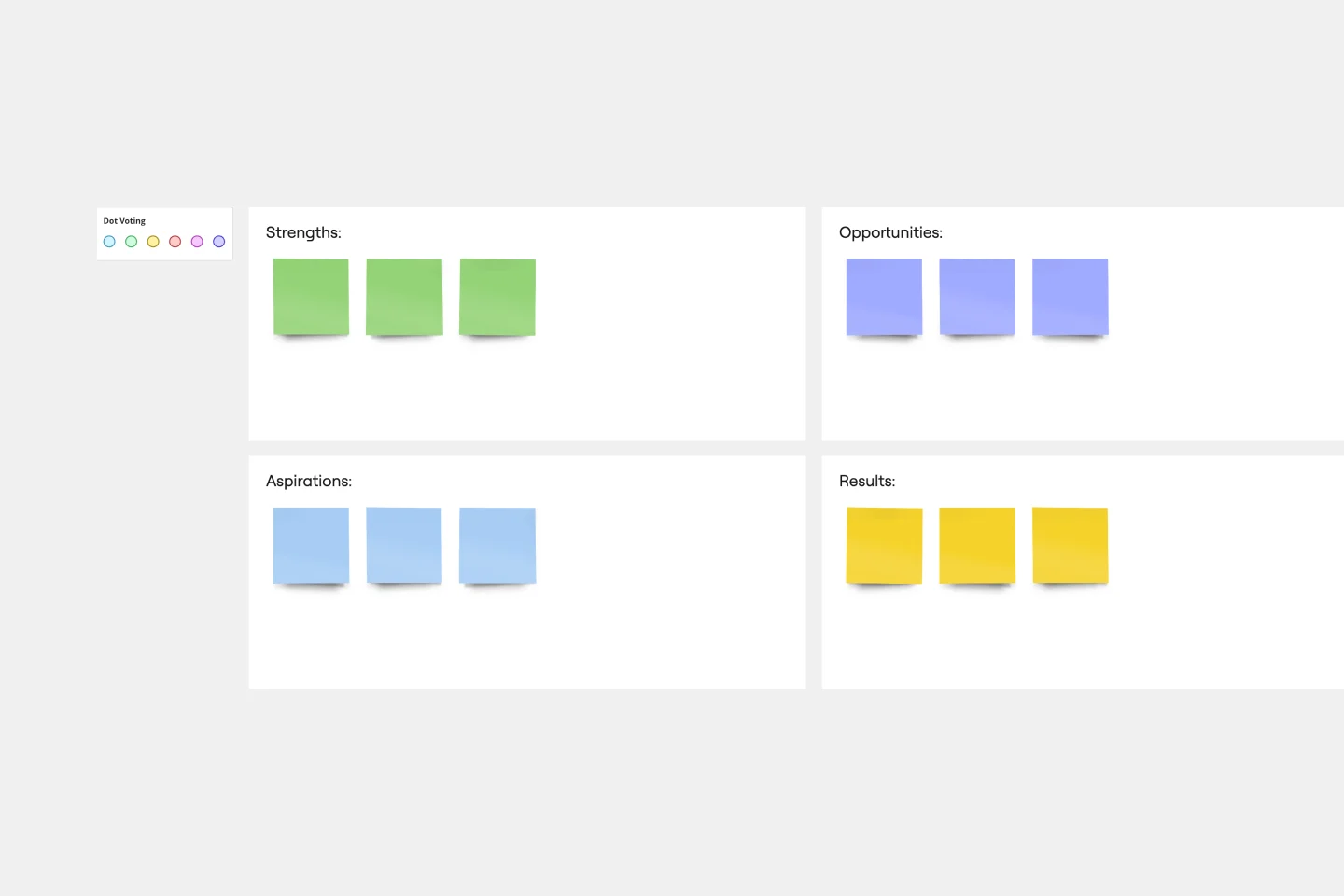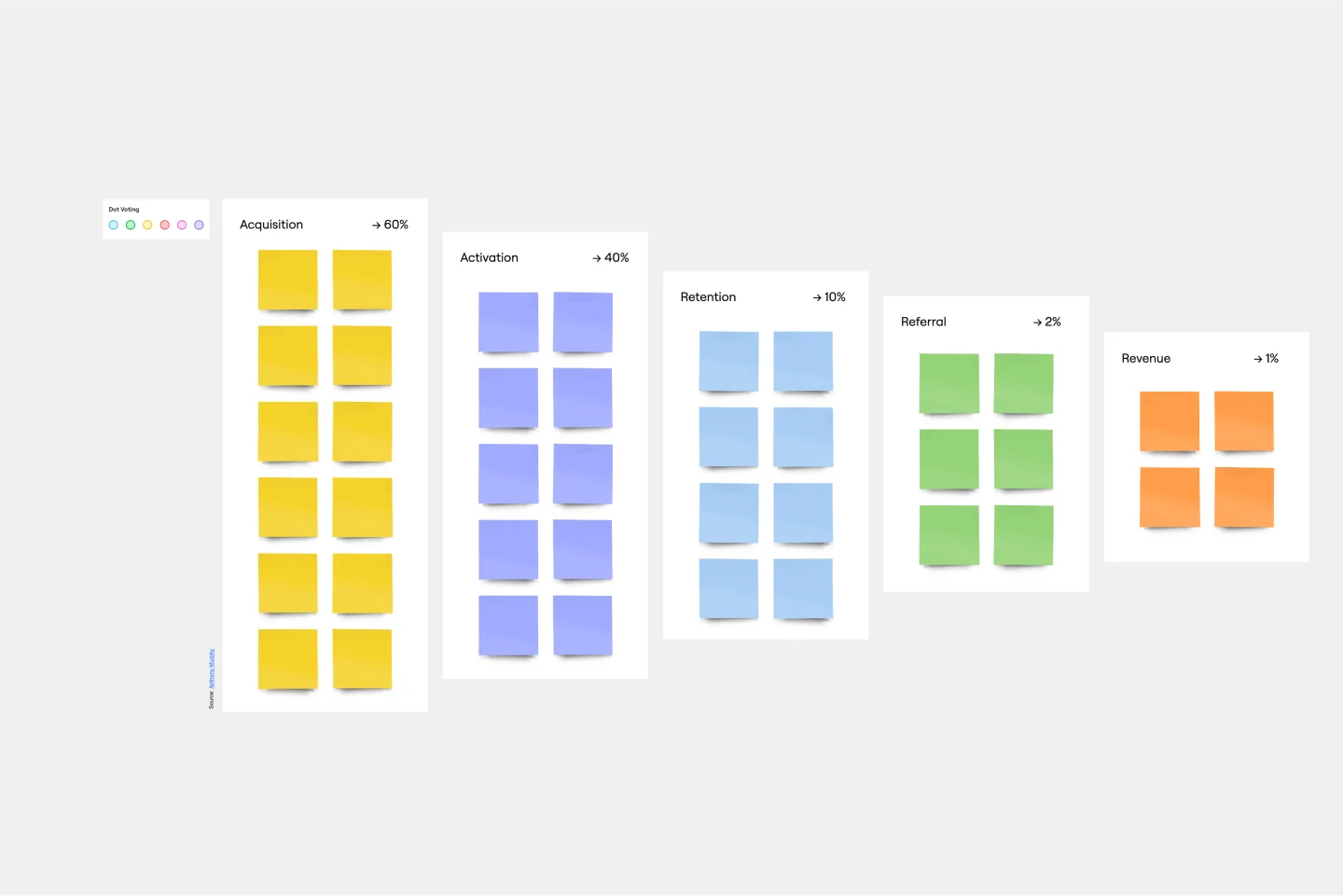About the Growth Experiments template
The best product ideas are the ones you can prove. The Growth Experiments template provides a clear, visual framework for your team to move beyond guesswork and start making data-driven decisions. It’s a dedicated space in your innovation workspace to manage your entire experimentation pipeline, from a rough idea in a brainstorm to a complete analysis of a live test. This template helps you build a process for continuous learning and measurable improvement.
How to use the Growth Experiments template
Brainstorm your hypotheses. Get all your ideas for potential improvements onto the board in the Brainstorm column. This is the place to capture every assumption you want to test.
Prioritize your experiments. Move your best ideas to the Prioritize column. Discuss with your team which experiments have the highest potential impact with the least amount of effort.
Build the test. Once you’ve decided on a priority, move the card to the Build column. This is where your team develops the experiment, whether it's a new feature, a change to the user interface, or a marketing campaign.
Run the experiment. Move the card to Test when the experiment is live with users.
Analyze the results. After the test is complete, move the card to Analyze. Document the key learnings, decide on the next steps, and share the results with your team.
Why use the Growth Experiments template?
Make data-driven decisions. Replace opinions and assumptions with validated learnings from real user behavior.
Create a culture of experimentation. Give your team a simple, repeatable process to test new ideas and learn quickly.
Accelerate your learning cycle. The visual workflow makes it easy to see the status of every experiment, helping your team move faster from one test to the next.






